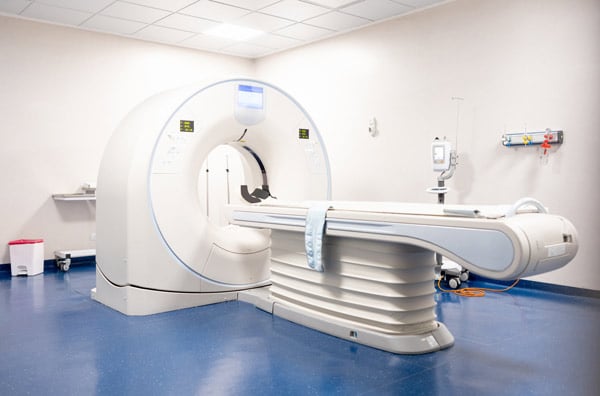Philips Medical Systems
Albany County

A medical device manufacturer with a complex energy profile achieves big savings with dedicated energy manager
A Latham-based facility that manufactures electromagnets for MRI machines identifies 15% net energy use reduction with NYSERDA’s On-site Energy Manager program.
A Healthcare Leader with a History of Innovation
Philips has a fascinating, 130-year history as an inventor, designer, and manufacturer. Its diverse list of consumer products has included light bulbs, radios, cassette tapes and videocassette recorders, vacuum tubes, electronics, and more.
With corporate headquarters in the Netherlands, and locations across the U.S. -- including New York -- Philips now supports the health care industry with high-quality, personal and professional medical solutions and equipment.
Project at a Glance
Company:
Philips Medical Systems, Latham, NY
Industry:
Healthcare; Diagnosis & Treatment Segment
Facility size:
254,000 square feet
Usage:
Manufacturing plant, R&D Test Lab, Corporate Office
Total Identified Savings:
Electricity 1,988,880 kWh
Fossil Fuel 3,990 MMBtu


An MRI machine. Source: Getty Images
An Energy Intensive Manufacturing Facility
The Philips Medical Systems site at Old Niskayuna Road in Latham is Philips’ primary U.S. location for the development and manufacturing of electromagnets for Magnetic Resonance Imaging (MRI) machines. It operates 24/7.
The Latham location is the company’s largest in North America, both in physical size and energy consumption. The main structures are a 52,000 ft2, two-story office building and a 196,000 ft2 manufacturing space.
Energy-efficient production aligns with Philips’ corporate goals of optimizing overall manufacturing performance. Meeting energy and sustainability goals are equally important.
Choosing a Dedicated Energy Manager
Philips had a contracted vendor -- Jones Lang Lasalle (JLL) -- for its Northeast regional facilities management. But, due to the Latham site’s size and complexity, energy use intensity, and annual energy consumption, it was clear that a dedicated onsite energy manager would be beneficial.
After learning about NYSERDA’s On-site Energy Manager (OsEM) program from peer sites that participated in the program, Philips and JLL applied.
Energy Reduction and Sustainability Targets
Philips already had a corporate annual energy use reduction target of 2% per site per year. Philips also set a corporate goal to source 75% of global energy consumption from renewable sources by 2025 and 90% by 2030, with 100% renewable electricity and carbon neutral operations.
For the OsEM program, Philips doubled its reduction target to 4% annually.
The OsEM Experience
“Day One” collaboration between the new energy manager and the JLL facilities team was productive. Immediately, they identified and implemented several no-cost energy conservation measures (ECMs). They also started a list of investment-grade projects. The list included replacing end-of-life office heating, ventilation, and air-conditioning (HVAC) system, a source of significant electric and fossil fuel savings.
No-cost
- Adjust setpoints
- Fine tune building management system (BMS) controls logic
- Deactivate unused lights and equipment
Investment-grade
- ASHRAE energy audits
- Building envelope repairs and improvements
- Comprehensive lighting retrofit projects
- Domestic hot water system enhancements
- HVAC systems optimization
- Compressed air systems upgrades
- Process cooling systems improvements
- Modernize ultra-high vacuum pumping systems
- Capital-intensive office HVAC system upgrades
Big Savings, Big Success
In total, the OsEM identified 27 energy projects over the two-year duration of the program. Through June 2024, eight of these projects were successfully executed. Installed electricity savings were 700,000 kWh, with utility cost savings of $95,000 per year.
The remaining identified measures are planned to be scoped and installed in 2024 or 2025. These projects are estimated to deliver an additional 1.3 GWh electricity use reduction, 3,989 MMBtu of fossil fuel savings, and additional annual utility cost savings of nearly $200,000.
The OsEM developed strong relationships with essential onsite facilities teams. Together, they exceeded energy conservation goals.
- Total energy use reduced by 5% during the engagement
- Successfully deployed 8 of the 27 projects
- Remaining planned projects estimated to deliver an additional 1.3 GWh electricity use reduction, 3,989 MMBtu of fossil fuel savings, and additional annual utility cost savings of nearly $200,000
- The total implementation cost for all identified projects amounts to $1.87 million. There is a potential for utility rebates totaling approximately $281,000, improving the financial benefits to the Latham site. With utility rebates included, an average payback of approximately 5 years is expected.
Installed electricity savings of 700,000 kWh and utility cost savings of $95,000 per year
Additionally, Philips’ achieved its energy and sustainability goal of “75% renewable energy in operations by 2025” in 2024.
OsEM Proves Its Value
In a short amount of time, the high value of an OsEM was clear. Today, the Philips/JLL energy team has grown, with a dedicated portfolio energy manager who provides targeted energy services to other Philips sites, too. The Latham facility currently has 10 projects scoped and planned for execution by the end of 2024. The remaining 9 will be scoped for execution in 2025.
Additionally, the OsEM participated in peer-to-peer sharing of best practices with facility management staff from all Philips sites within JLL’s portfolio. Sharing has helped the other properties implement their own energy and carbon emission reductions.
Want to identify areas for improvement, increase your buildings energy efficiency, and lower operating costs?
Visit NYSERDA’s On-site Energy Manager program page or contact us at [email protected].
